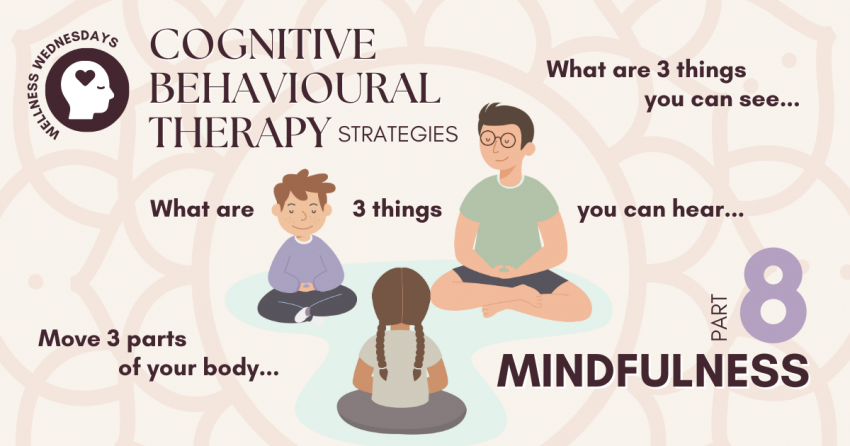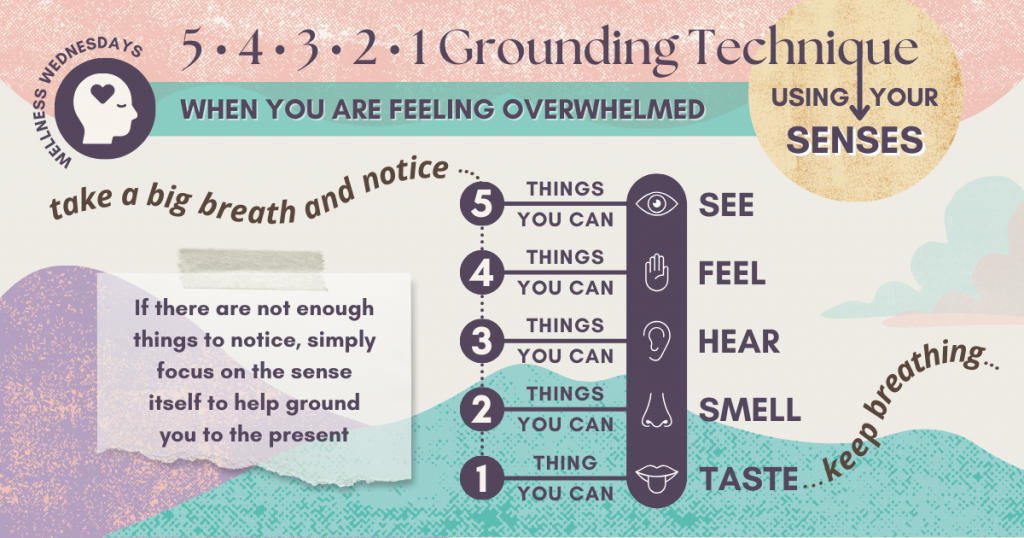Mindfulness is a powerful technique within Cognitive Behavioural Therapy (CBT), emphasizing the interconnectedness of thoughts, emotions, and behaviours. It helps children stay grounded, enhancing self-awareness and emotional regulation.
Click HERE for a quick explanation of mindfulness for older children.
Practical Methods for Mindfulness
This practice can be tailored to fit individual needs. Recognizing each child is unique, consider introducing this concept using one of the following quick and simple methods to see what may work best for your situation.
Mindfulness Meditation: Simple guided meditations can help children pay attention to their breathing and notice their thoughts without judgment, improving concentration and emotional regulation.
Click HERE if your child as a good 20 minutes for an engaging guided meditation story.
Body Scan: Mentally scanning the body from head to toe, noting any sensations without trying to change them, helps in recognizing and relaxing tension.
54321 Grounding Technique: This quick and effective mindfulness exercise helps anchor you in the present moment by engaging all five of your senses to foster a deep sense of presence and appreciation for the surrounding environment.
Monitoring Progress
Tracking developments is key to noting improvements in anxiety management. Here are some tools to help your child monitor their progress:
- Journaling: Write about mindfulness experiences and changes in feelings and behaviours.
- Progress Charts: Use charts to visually track mindfulness practice and any noticeable improvements in mood or anxiety levels.
- Feedback Sessions: Regularly discuss with children how they feel before and after mindfulness sessions to gauge effectiveness.
Parental Support
This is crucial for fostering mindfulness in children. By modeling mindful behaviours and practicing together, parents create a nurturing environment. The Smiling Mind Family Toolkit provides practical exercises and worksheets to support family well-being, emphasizing the importance of parental involvement. It helps develop emotional awareness and stress management, showcasing the role of parents in guiding children to develop mindfulness skills.
3-3-3 Technique
This is another easy-to-remember mindfulness exercise that can help children anchor themselves in the present moment, especially during times of anxiety or stress.
- Identify 3 Things You Can See: Look around and consciously note three different things in your surroundings. This shifts focus away from anxiety-provoking thoughts.
- Identify 3 Sounds You Can Hear: Listen carefully and identify three distinct sounds, such as birds chirping, a clock ticking, or distant traffic. This enhances auditory awareness and presence.
- Move 3 Parts of Your Body: Gently move three different parts of your body, such as wiggling your toes, stretching your arms, or rotating your neck. This helps in physical relaxation and grounding.
Breathing Exercises
These are a cornerstone of mindfulness practice and can be particularly effective for children to help calm the nervous system and improve focus.
- Deep Breathing: Inhale deeply through the nose, hold for a count of three, and exhale slowly through the mouth. This simple exercise can be repeated several times to induce a state of calm and improve emotional regulation.
- Belly Breathing: Have children place one hand on their chest and the other on their belly. As they breathe in, they should feel their belly rise, and as they breathe out, their belly falls. This helps them focus on their breath and body, promoting relaxation.
These and variations of breathing exercises can be found in our Breathe Easy series.
Mindfulness Jars
Often called “calm down jars,” they are a visual and tactile way to help children practice mindfulness. These jars can be easily made at home and used to illustrate the process of calming the mind.
How to Make a Mindfulness Jar:
- Fill a jar with water and add glitter glue or a mixture of clear glue and loose glitter.
- Seal the jar tightly with a permanent adhesive and shake it up.
- Watch as the glitter swirls around and slowly settles to the bottom.
Explain to children how the jar represents their mind; the glitter their thoughts. As children watch the glitter settle, they can practice deep breathing and imagine their thoughts and feelings settling as well. This visual aid helps in understanding the concept of calming the mind while soothing it with something beautiful.
Movement: Stretching, Walking, Dancing, Mindful Freeze Dance
Incorporating movement into mindfulness can be particularly engaging for children and helps them connect with their bodies.
- Stretching: Simple stretches can be paired with mindful breathing to help children relax and focus on their physical sensations.
- Walking: Mindful walking involves paying attention to each step, the feeling of the ground underfoot, and the rhythm of walking. This practice enhances physical awareness and calmness.
- Dancing: Encouraging children to dance mindfully, focusing on how their body moves and feels, can be a fun way to practice mindfulness.
- Mindful Freeze Dance: Play music and let children dance freely. When the music stops, they must freeze in place and take a moment to notice their body and surroundings. This combines fun with mindfulness and improves focus.
Here are a couple of fun ways to move:
Mindful Eating
This practice teaches children to focus on the experience of eating, which can help with emotional regulation and appreciation of food.
- Sensory Experience: Encourage children to notice the colours, textures, smells, and flavours of their food. This can be done with a simple snack, like a piece of fruit. It enhances sensory awareness and gratitude.
- Slow Eating: Have children take small bites and chew slowly, paying attention to the taste and texture of the food. This practice fosters mindfulness and enjoyment of meals.
- Gratitude: Incorporate a moment of gratitude before eating, appreciating the food and those who prepared it. This enhances appreciation and positive emotions.
Colouring is another practical example of mindfulness, offering a quiet activity for families. Many free resources like Monday Mandala offer a wide selection of pages to quiet the mind while creating something beautiful.
Practical Applications of Mindfulness in Everyday Situations
Mindfulness can address common challenges children face:
School Stress
- Deep Breathing: Before a test, practice deep breathing to calm nerves and enhance focus.
- Mindful Observation: Use the 54321 Grounding Technique to reduce stress by focusing on the present.
Social Anxiety
- Body Scan: Before social events, do a body scan to relax and reduce physical tension associated with anxiety.
- Mindful Listening: During conversations, practice mindful listening to stay present and reduce anxiety about speaking.
Bedtime Routine
- Mindful Breathing: Incorporate belly breathing to calm the mind and prepare for sleep.
- Body Scan: Use a body scan to release tension and signal the body it’s time to rest.
Conflict Resolution
- Mindful Listening: Encourage children to listen carefully to others’ perspectives during a disagreement.
- Breathing Exercises: Use deep breathing to stay calm during heated discussions.
Homework Time
- Mindful Eating: Have a mindful snack break to refresh and refocus.
- Stretching: Incorporate simple stretches to relieve physical tension and improve concentration.
Waiting in Line
- Mindful Observation: Encourage children to observe their surroundings with curiosity to pass time mindfully.
- Deep Breathing: Practice deep breathing to manage impatience and stay calm.
Mindfulness is a versatile and effective tool in CBT that can help children manage stress, anxiety, and emotional regulation with your help. Regular practice and consistency are key to maximizing its benefits. We’ve given you a lot of options to try out with your child. Pick the one that you think will work best and enjoy the calm it brings as they learn to stay grounded in the present moment and develop healthier coping mechanisms.
Next in our CBT series, we will learn how to build a Managing Anxiety Plan (MAP) to help us adapt as anxiety changes, practice with new challenges, identify red flags, and prepare coping strategies for when anxiety resurfaces. We’ll also discuss the importance of self-compassion and resilience, emphasizing that lapses are normal and part of the journey.

